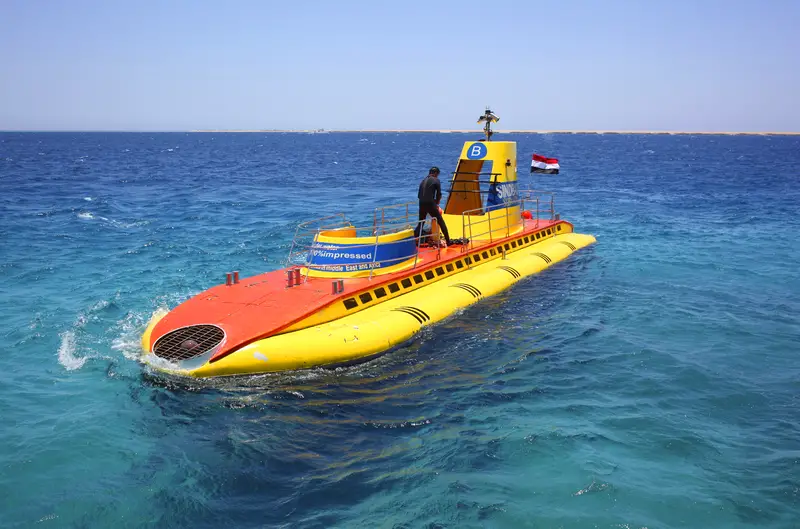At least six individuals lost their lives and nine others sustained injuries, with six in critical condition, following the sinking of a tourist submarine off Egypt’s Red Sea coast on Thursday, March 27. The submarine, named “Sinbad,” was carrying around 45 passengers, mostly Russian tourists, along with a crew of five Egyptians when it sank less than a mile from the shore of Hurghada, a well-known resort city famous for its beaches and vibrant coral reefs.
Emergency crews successfully rescued 39 passengers from the submerged vessel, according to local officials. The injured were taken to nearby hospitals, while other survivors were transported back to their accommodations.
Initial reports suggested all tourists aboard were Russian, but it now appears there were also citizens from India, Sweden, and Norway. The six deceased were all Russian. Some reports indicate that two children were among those who died, although officials have not confirmed the ages of the victims.
The submarine, operated by Sinbad Submarines, was on a scheduled underwater trip to observe coral reefs when the incident happened around 10:00 a.m. local time. The company’s website, which has gone offline following the accident, previously stated they owned two of only “14 recreational submarines” worldwide.
The vessel was intended to descend to approximately 270 feet, providing tourists with views of the Red Sea’s renowned marine life and coral formations. Sinbad Submarines claimed to employ an “expert team” with “years of experience” and noted that their submarines were built in Finland to endure underwater pressure up to 246 feet.
Some reports suggest the submarine may have collided with a reef before suffering depressurization, though the exact cause of the accident is still under investigation.
This event marks the second significant tourist vessel disaster in Egypt’s Red Sea in recent months. In November 2024, a tourist boat named “Sea Story” sank near Marsa Alam during adverse weather, leading to at least four confirmed deaths, with others presumed dead or missing.
The Red Sea is a vital hub for Egypt’s tourism industry, a crucial revenue source for the country’s economy. In 2024, Egypt generated $14.1 billion from tourism, more than twice the income from the Suez Canal, underscoring the sector’s economic importance.
Concerns over safety standards for tourist vessels in the Red Sea have grown in recent years. An oceanography expert cited in local media described the situation as a “crisis” concerning safety standards on some tourist vessels in the area.
The incident has prompted questions about inspection and safety protocols for tourist submarines and other vessels operating along Egypt’s Red Sea coast. Local authorities have launched an investigation into the circumstances surrounding the sinking.
Footage from previous Sinbad submarine trips showed families, including children, enjoying underwater experiences and interacting with divers outside the vessel. The submarine offered panoramic views through large viewing windows and was popular among tourists seeking to experience the Red Sea’s underwater wonders without diving equipment.
The region’s tourism industry has faced several challenges recently, including the COVID-19 pandemic and regional conflicts that have occasionally limited travel to certain areas. Despite these challenges, Egypt ranked first in Africa for tourism revenues in 2024.
Search and rescue operations continued throughout Thursday as authorities worked to identify all passengers aboard the submarine. The governorate office stated that a full investigation will be conducted to determine the cause of the sinking and prevent similar incidents.











